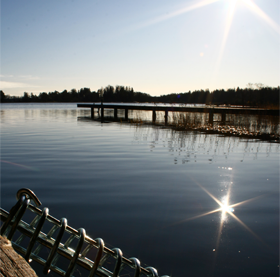Hazardous and toxic substances
A generation before it disappears
Toxins disappear very slowly from the marine environment, if at all. The absence of oxygen in the deep cause the sediments to serve as a depository long after the emissions have ended. For example it can take hundreds of years for dioxin to be halved on the seabed, while the same amount of dioxin in the atmosphere breaks down in a few days. The half-life of the organic substances is determined by its properties and the environment that it is found in. Since water exchange in the Baltic Sea is slow and water temperatures are low, concentrations of toxics in the Baltic Sea are higher than in other seas.
Bioaccumulate in the food chain
Moreover, hazardous substances become part of the ecosystem in a harmful way. Organic toxins are fat soluble and accumulate in the fatty tissue. The toxins are transported through the food web and the highest concentrations of organic toxins are found at the top, in fish, in seals, birds and humans. Hazardous substances are found in the marine environment, hence they are present in the ecosystem, affecting it at all levels.
The Swedish Food Administration advises pregnant women to limit their intake of Baltic herring and salmon because of the levels of dioxins and PCB stored in the fat of the fish. In Europe, selling fatty fish caught in the Baltic was banned in 2001, both as food and animal feed. However, during a transitional period until 2011, Sweden and Finland are granted an exemption and may sell fish on their national markets. Today the main source (40 to 50 percent) of the total intake of dioxin and PCB among adults in Sweden comes from Baltic Sea fish.
Brominated flame retardants also bioaccumulate in the fatty tissue and biomagnify along the food chain. The occurrence of these substances has dramatically increased over the years and although they were banned in the 1980’s they are still found in breast milk on the same levels as in the past decade.







